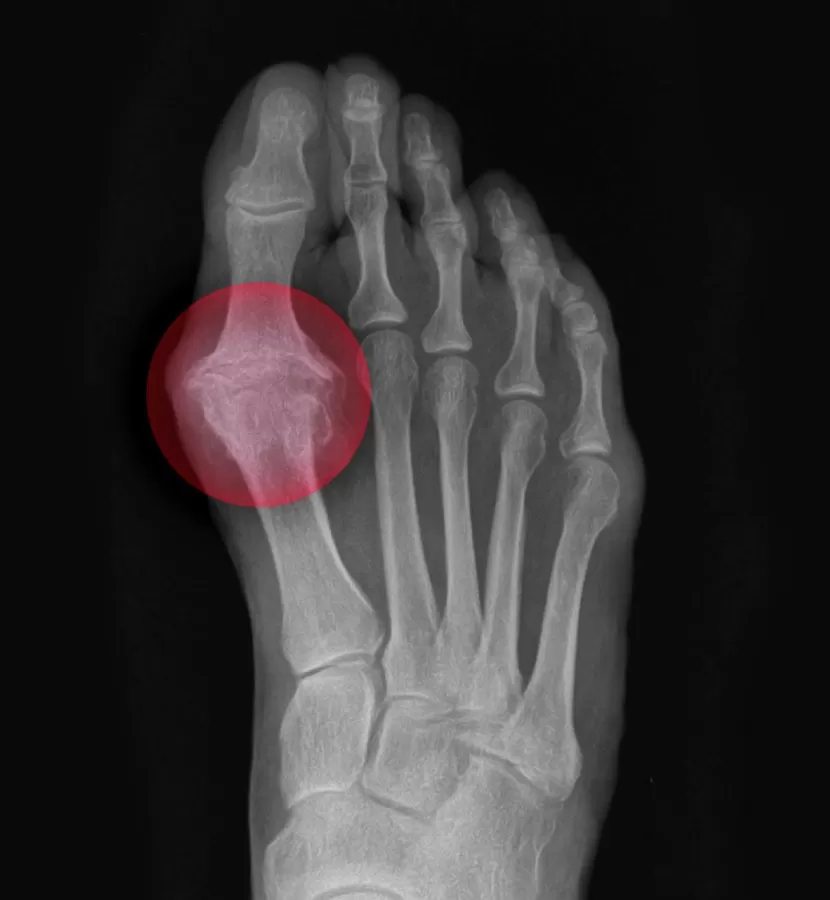What is big toe arthritis?
Big toe arthritis, or arthritis of the big toe joint, is a condition where the healthy cartilage of the big toe joint becomes eroded, leading to a limited range of motion and eventually becoming rigid, or stiff.
The medical term for big toe arthritis is hallux limitus (for limited arthritis) and hallux rigidus (for severe arthritis). In either case, the big toe joint becomes painful, enlarged, and inflamed.
As the big toe joint becomes more and more arthritic, bone spurs form around the joint. Bone spurs that develop on the top of the joint are called a “dorsal bunion” and should not be confused with a typical bunion that forms on the side of the big toe joint.







